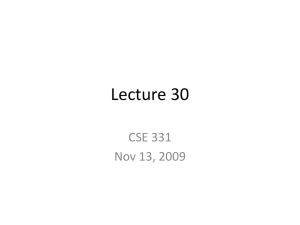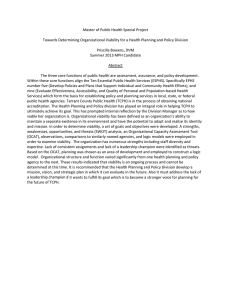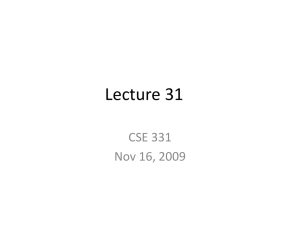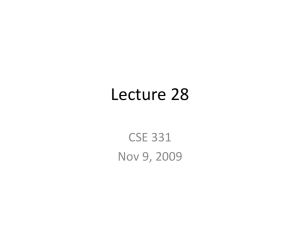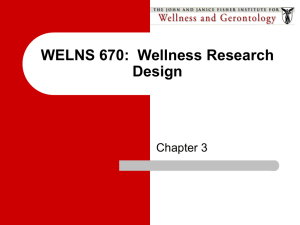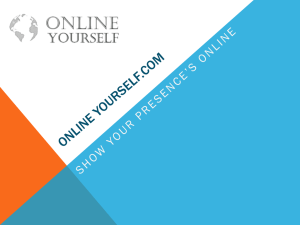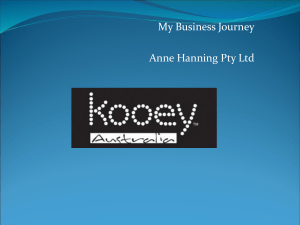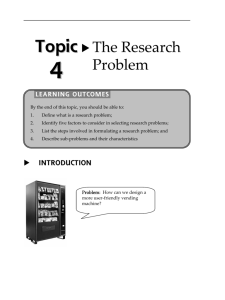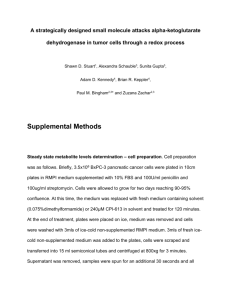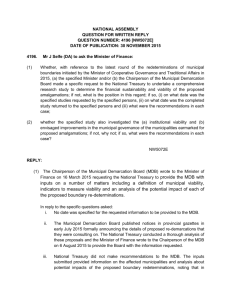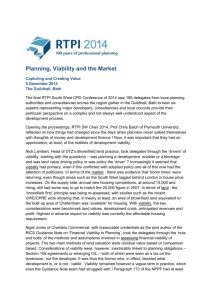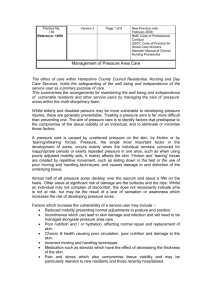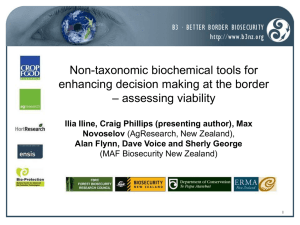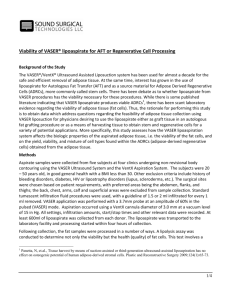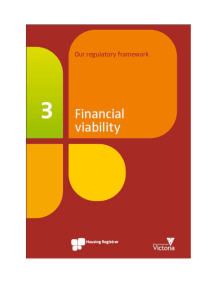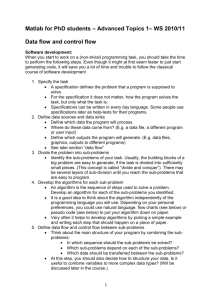1-Principles of Engineering Design
advertisement
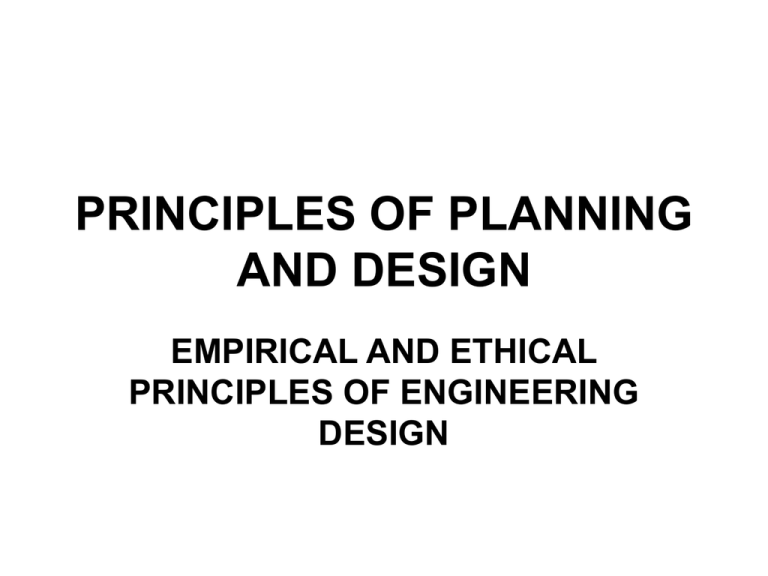
PRINCIPLES OF PLANNING AND DESIGN EMPIRICAL AND ETHICAL PRINCIPLES OF ENGINEERING DESIGN EMPIRICAL PRINCIPLES OF ENGINEERING DESIGN • These are factual statements, derived from experience, that characterise the guidelines, requirements, and procedures, that are necessary for the technical success of the engineering design process. 1) The material nature of the object of engineering design • The object of design is a material good or service which is physically realisable. • This means that Engineering design has an authentic purpose, and is not hypothetical. • Furthermore, the objects are not metaphysical 2) The iterative nature of the design process • Design is an iterative problem-solving process; in which the list and timetable of activities identified as philosophy of design, are applied repeatedly, until a satisfactory solution is obtained; 3) The decision-making nature of the design process • Design is a progression from the abstract to the concrete; starting with probably abstract ideas about need, and thereafter elaborating detailed specifications of the object that would satisfy the need identified; 4) Structure of design problem at the appex of a hierarchy of sub-problems • In attending to the solution of a design problem, there is uncovered a substratum of sub-problems; and the solution to the original problem, is dependent on the solution of the sub-problems. • This statement re-iterates the process of synthesis and analysis. Synthesis creates the whole from the parts. Analysis achieves the opposite and resolves the whole into parts. • The statement therefore says that the whole can only determined by elaborating the parts. A concept is not designed, until the parts are designed; 5) Information processing feature of the design process • Design is a processing of information that results in a transition from uncertainty to certainty, regarding the success or failure of the design; 6) When to terminate a design project • A design project or sub-project is terminated whenever confidence in its failure is sufficient to warrant its abandonment, or • Is continued when confidence in an available design solution is high enough to warrant the commitment of resources necessary for the next phase; 7) Design solution in available modes of communication • A design is a description of an object and a prescription for its production or construction; • Therefore it will have existence to the extent that it is expressed in the available modes of communication, such as graphic (drawings), written (reports), and verbal presentation. ETHICAL PRINCIPLES OF ENGINEERING DESIGN • • These are statements or guidelines that respond to ethical issues of the designer’s responsibility to society, Recognising the fact that while a design problem has no unique answers, the designer has to consider and reconcile the possibly conflicting interests and value judgements of 1) 2) 3) 4) the consumer, producer, distributor and himself. 1) Human needs, Engineering design, and Technology factors • • Engineering Design must be a response to individual or social needs which can be satisfied by the technological factors of culture. Technological factors of culture are the library of production techniques available from human History, including those that science has yet to explain. 2) Planning or design process has a cost to be controlled • Information and its processing has a cost, which must be balanced by the worth of the evidence bearing on the success or failure of the design; 3) Avoidance of pre-mature decisions • • In the solution of a design problem at any stage of the process, commitments which fix future design decisions must not be made beyond what is necessary to execute the immediate solution. This will allow the maximum freedom in finding solutions to sub-problems at lower levels of design. 4) The need for economic viability • The good or service, described by a design, must have utility to the consumer that equals or exceeds the sum of the proper costs incurred in making it available to him, the test of economic viability; 5) The need for financial viability • The operations of designing, producing and distributing the good must be financially supportable, the test of financial viability; 6) The need for optimal choices • The choice of a design concept must be optimal among the available alternatives; 7) Criteria of optimality to be agreed with stake-holders • Optimality must be established relative to a design criterion (such as quantity, quality, cost, etc.), which represents the designer’s compromise among possibly conflicting value judgements that include those of 1) the consumer, 2) the producer, 3) the distributor and 4) the designer. •THE END
